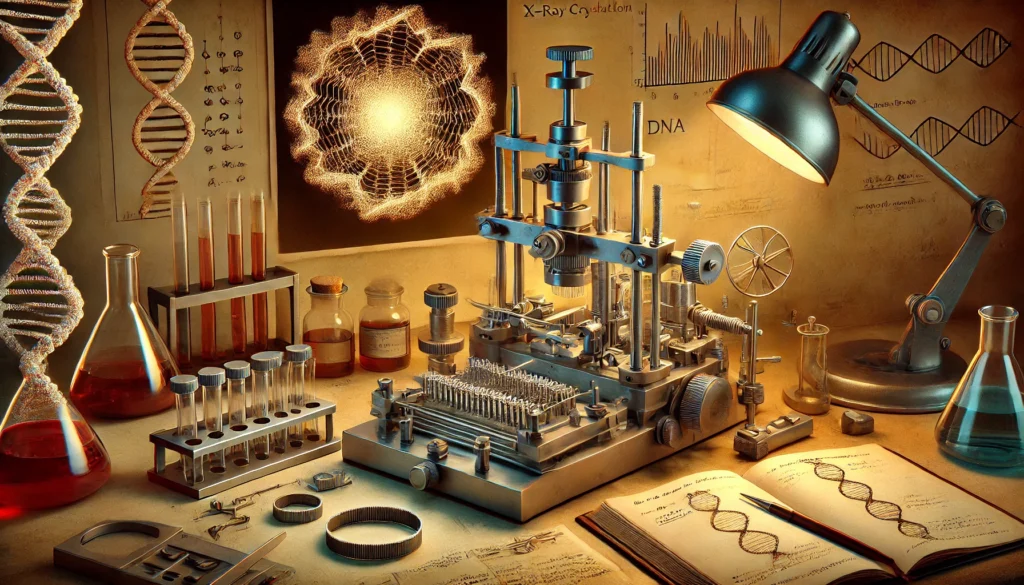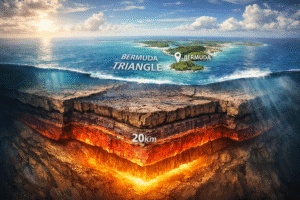Fun Fact: Rosalind Franklin’s groundbreaking photograph, famously known as Photo 51, was critical in uncovering the structure of DNA!
What comes to mind when you think about DNA—the blueprint of life? For most, it’s the double helix structure discovered by James Watson and Francis Crick. But behind this monumental discovery lies the story of Rosalind Franklin, a brilliant scientist whose contributions were overshadowed for decades. Born in 1920, Franklin was a trailblazer in X-ray crystallography, a technique that revealed the secrets of DNA, RNA (ribonucleic acid), viruses, and more. Let’s uncover her remarkable journey and lasting impact on science.
A Passion for Science
Rosalind Franklin grew up in London, showing an early aptitude for math and science. Encouraged by her family, she pursued chemistry at Newnham College, Cambridge, in the 1940s, a time when women were still underrepresented in scientific fields. Franklin’s determination led her to complete a PhD in physical chemistry, after which she ventured into X-ray crystallography—a field that became her lifelong passion.
Anecdote: Franklin’s sharp intellect was evident even as a child. Her father once questioned whether she understood her decision to pursue science over more traditional roles for women. Rosalind confidently replied, “Science will find me what I need.”

Unravelling the DNA Mystery
In 1951, Franklin joined King’s College London, where her expertise in X-ray diffraction made her a key player in DNA research. Employing advanced techniques, she produced the now-iconic Photo 51, a groundbreaking image that unveiled the helical structure of DNA. This photograph provided the critical evidence Watson and Crick needed to model DNA as a double helix.
Why Photo 51 Mattered:
It showed X-shaped patterns indicating a helical structure.
It provided precise measurements of the molecule’s dimensions.
Controversy: Without Franklin’s permission, her colleague Maurice Wilkins shared Photo 51 with Watson and Crick. This act, combined with the lack of acknowledgement in their seminal Nature paper in 1953, sparked debates about ethics and recognition in science.
Contributions Beyond DNA
Franklin’s brilliance extended far beyond DNA. After leaving King’s College, she joined Birkbeck College, where she studied the structures of RNA and viruses. Her research on the tobacco mosaic virus and the polio virus paved the way for advancements in virology.
Case Study: Franklin’s detailed structural analysis of the tobacco mosaic virus helped scientists understand how viruses infect cells. This work became a cornerstone for modern virology and vaccine development.
Facing Challenges
Despite her achievements, Franklin faced numerous challenges, from gender bias to professional rivalries. At King’s College, she worked in an environment where her contributions were often undervalued, and her relationship with colleagues was strained.
Personal Struggles: In 1956, Franklin was diagnosed with ovarian cancer. Despite her illness, she continued her research, producing groundbreaking work until her death in 1958 at the age of 37. Her early passing robbed the world of an extraordinary scientist.
Legacy and Recognition
Though overlooked during her lifetime, Franklin’s legacy has grown over the years. Today, she is celebrated as a pioneer who broke barriers in science.
Key Recognitions:
Numerous institutions, scholarships, and awards now bear her name, honouring her contributions to DNA, RNA, and virology.
In 2003, the Royal Society established the Rosalind Franklin Award to promote women in STEM (science, technology, engineering, and mathematics).
Modern Relevance: Franklin’s work resonates today as scientists continue to unravel the complexities of genetics and develop new technologies in molecular biology.
Conclusion
Rosalind Franklin’s life is a testament to perseverance, intellect, and the pursuit of knowledge. Despite facing gender bias and a lack of recognition, her work laid the foundation for some of the most significant scientific advancements of the 20th century. As we celebrate her contributions, let’s also reflect on the importance of equity and recognition in science.
What are your thoughts on the challenges women face in STEM? Share your perspective below and join the discussion!
Author’s Note:
Rosalind Franklin’s story inspires me to think deeply about the unsung heroes behind every great discovery. Let’s continue to honour their contributions and advocate for greater inclusivity in science.
G.C., Ecosociosphere contributor.
References and Further Reading:
- Nature: Rosalind Franklin and DNA
- The Rosalind Franklin Society
- Genetics is the foundation of life, shaping our past, present, and future. https://scienceofbiogenetics.com/articles/genetics-the-key-to-unlocking-the-secrets-of-life




